Explore the Best AI Image Gallery

The Algorithmic Brush: AI-Generated Media and the Evolving Creative Landscape
The world of art, design, and media is undergoing a profound transformation. Artificial intelligence (AI) is no longer a futuristic concept; its actively shaping the creative landscape, generating images, music, text, and even video with astonishing realism and complexity. This rise of AI-generated media presents both exciting opportunities and complex ethical challenges that demand careful consideration.
The Expanding Canvas: Potential Uses of AI-Generated Media
AIs ability to create has opened up a vast array of possibilities across various creative fields:
- Art and Design: Artists can leverage AI tools to explore new visual concepts, generate unique textures and patterns, or even co-create artworks with the algorithm, blurring the lines between human and machine creativity.
- Content Creation: Writers can utilize AI to overcome writers block, generate story ideas, or even draft entire articles and scripts. Marketers can create personalized content at scale, tailoring messages to specific audiences.
- Music Composition: AI algorithms can compose original music pieces in various genres, collaborate with human musicians, or even generate soundtracks for films and video games.
- Education and Accessibility: AI-powered tools can help students learn about different artistic styles, generate personalized learning materials, or provide accessibility features for individuals with disabilities.
Navigating the Ethical Minefield
While the potential of AI-generated media is undeniable, its crucial to address the ethical concerns that arise:
- Authorship and Copyright: Who owns the copyright to AI-generated works? Is it the developer of the algorithm, the user who provides input, or the AI itself? Legal frameworks need to evolve to address these complex ownership questions.
- Bias and Representation: AI algorithms are trained on vast datasets, which can contain societal biases. This can result in AI-generated content that perpetuates stereotypes or excludes certain groups. Its essential to ensure fairness and inclusivity in the development and deployment of AI tools.
- Misinformation and Deepfakes: The ability to create realistic synthetic media raises concerns about the spread of misinformation and the potential for malicious use, such as creating deepfakes for political manipulation or defamation.
- Impact on Human Creativity: Will AI-generated media diminish the value of human creativity? Its important to foster a balanced approach where AI augments human capabilities rather than replacing them entirely.
Shaping the Future: Trends and Considerations
The field of AI-generated media is constantly evolving. Here are some key trends to watch:
- Increased Accessibility: User-friendly AI tools will become more widely available, empowering individuals with less technical expertise to create with AI.
- Customization and Personalization: AI algorithms will become even better at tailoring content to individual preferences, creating personalized experiences in areas like entertainment, education, and marketing.
- Human-AI Collaboration: Well see more examples of artists, designers, and creators collaborating with AI tools as partners, leveraging the strengths of both human and machine intelligence.
- Ethical Frameworks and Regulations:** Governments and industry bodies will continue to develop guidelines and regulations to address the ethical challenges posed by AI-generated media.
The rise of AI-generated media is a watershed moment in the history of creativity. By embracing its potential while navigating the ethical complexities, we can shape a future where AI empowers human imagination and unlocks new frontiers of artistic expression.






](https://images.ai-img.art/thumbnails/150/bd056a4718c27444e064198762f8dc8ffa1f74f1afd7dcda8d5cb8b142797d6e.webp)




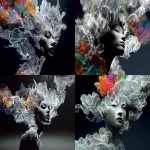
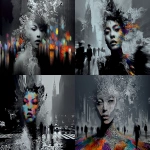





](https://images.ai-img.art/thumbnails/150/a3ed6513a6661aa3ee46e0c2924d1e8888854e91d8908de39db5590dc41f8d8f.webp)
](https://images.ai-img.art/thumbnails/150/ff09e32d2be011c0dd785984c5c1e47839ce551a31da1bde242860b30df2aa30.webp)

](https://images.ai-img.art/thumbnails/150/2ebdeb4f7db35100e5be5de9bc3e533a40d14e5feedefd7ffc586524a0f3ba8c.webp)









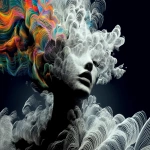
](https://images.ai-img.art/thumbnails/150/685ae68cfab93a7e59a71206867b060c45bd6fd3cd561c4fe60fca514b09c5f8.webp)






](https://images.ai-img.art/thumbnails/150/847809c77ca9a73b68bc190e6efb06fec87157685a243730d5a66a403b0e6e10.webp)
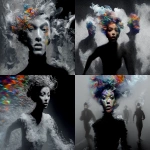


](https://images.ai-img.art/thumbnails/150/0ba0be922ab76af53f75ab90126ae2b18a600ee3b96941e8ab897a9f10594e5a.webp)

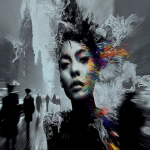
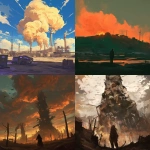


](https://images.ai-img.art/thumbnails/150/7cf5a08238f29c821f52bb4f63db48af0b7f633ff3b9f7253074d78ced9ff6f6.webp)